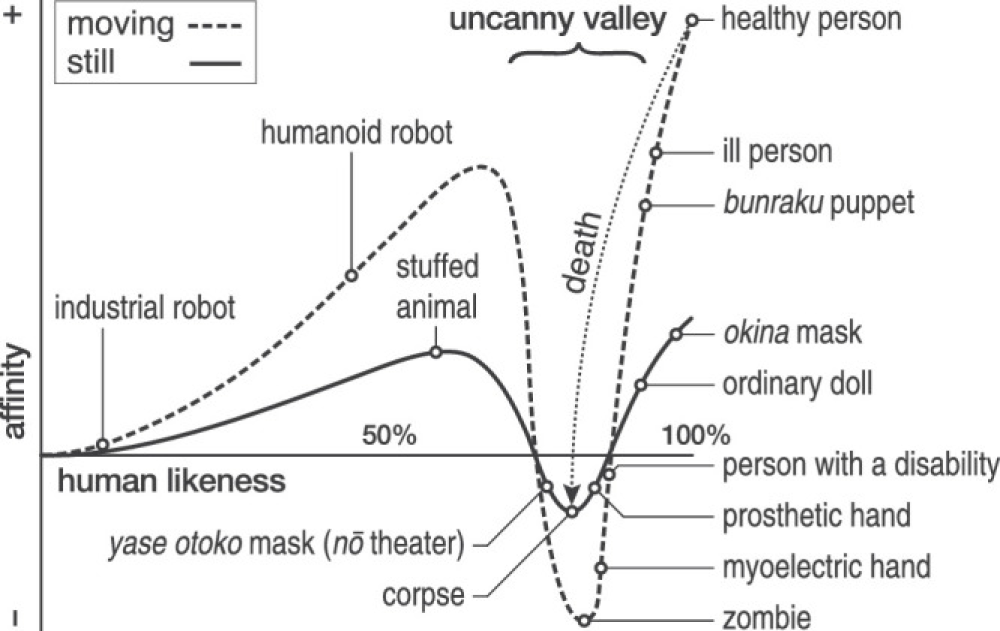There are many things that are creepy about I, Robot’s Sonny. He’s missing the back of his head, for starters, but then there’s also that way he looks just a little bit blank all the time (even when destroying Will Smith in two words). What is it about this robot’s way of thinking that makes him so creepy?
Well, for one thing, Sonny doesn’t have eyebrows. In conversation, it’s a very human thing for a person to wrinkle up their forehead while they consider something. A furrowed brow, we call it. Maybe a little squint. These are all crucial to that “uhhh… lemme think” face, and when humanoid robots fail to do this, it taps into something known as the uncanny valley.

“It’s essentially when we see something that’s almost human, but not quite,” said neuroscientist and author of Horror On The Brain, Dr Austin Lim, who will be the guest speaker at IFLScience’s next CURIOUS Live event. “It’s called this valley because we have a dip in our affinity towards that thing. If we think about how our affinity towards stuff rises to a certain degree, but when it gets a little bit too close to being human, but not quite, there’s something about it that’s really creepy and kind of unsettling.”
“What’s so cool about the uncanny valley is that it can be used to create a sense of horror, if you want it to,” said Lim. “So, [the horror movie] Megan is a great example of it. It’s essentially about a robot girl – a classic slasher flick – where there’s something really weird about the way she responds and the way she moves and behaves. It’s nearly human, but not quite.”
A powerful tool, but one that can come back to bite you in the ass.
“When you don’t want to create horror, you’re really trying to avoid and stay away from the uncanny valley,” said Lim, and if you’re wondering what that kind of disaster might look like, may I direct you to Cats, 2019.

Image credit: © IFLScience, Dr Austin Lim
So, how do you overcome that if you want to make a friendly humanoid robot that isn’t going to terrify the people it lives with? Well, a 2024 study published in the International Journal of Social Robotics thinks that “uhhh… lemme think” face is key. The study perfected the robot frowny face by first identifying the facial patterns associated with that face in humans. It then examined whether applying these facial patterns to androids could improve human-robot interactions, and the results were promising.
“When people are ‘thinking,’ they would express the furrowed face,” said study corresponding author Shushi Namba, associate professor at Hiroshima University’s (HU) Graduate School of Humanities and Social Sciences, in a statement. “Implementing human-like ‘thinking faces’ in androids enhances perceptions of ‘being in thought,’ genuineness, human-likeness, and appropriateness while reducing the uncanny valley effect.”
“The ultimate goal is to develop androids that can engage in more natural and intuitive interactions with humans, reducing the sense of eeriness and increasing their acceptance in social settings. To get there, we need to further refine the implementation of thinking faces in androids by considering dynamic aspects of facial movements and investigating their effects in real-time social interactions.”
Interested in other ways we can use neuroscience to make really great horror? Join us at CURIOUS Live with Dr Austin Lim, as we dive into the science of sci-fi and his new book Horror On The Brain. Secure your spot here.
Source Link: Why Is The Uncanny Valley So Frightening? And What One Frowny Robot Is Doing To Overcome It